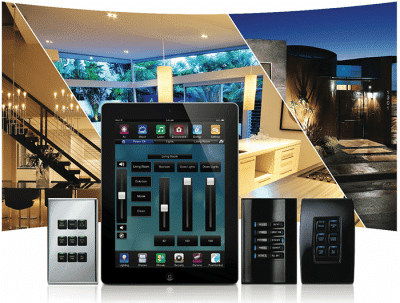There is a baffling opinion that is very real and prevalent in the smart home industry in Australia: people generally don’t like lighting control. And those ‘people’ include your interior designers, architects and the general building community.
But why is that, you ask? Surely lighting control is an option that everyone should consider when building or renovating a house. Why push multiple buttons and manually turn dimming knobs to adjust the lighting when it can be done intelligently through one button? Well to answer that question, we have to look at the current state of the market in Australia.

Firstly, let’s get one thing clear from the outset. When it comes to technology, our fair nation has some funny ways. Look at the NBN debacle and delivering ‘high speed’ broadband internet to our homes. Should be simple right? Other countries haven’t struggled as much as we have, the end result is that we’re constantly playing catch-up. Leaving the political aspects aside, the reality is that we suffer from our remote geographical location. We just don’t have close enough ties to the major tech areas of the world, being the US, the Far East and Europe. And in some cases, rather than accepting that perfectly good solutions exist in foreign territories, we try and reinvent the wheel. It’s just that other companies have spent years and years perfecting the wheel and are perfectly happy to share their wheel with us, but we just aren’t willing to come to the party.
Lighting control is a perfect example of such stubbornness.
For years, lighting control in Australia has meant either C-Bus – a brand owned by Clipsal which is now part of the European electrical giant Schneider Electric, or Dynalite – a once local Sydney-based company who were bought by Philips in 2009. Both brands competed for the Australian market with C-Bus being more prevalent in residential projects and Dynalite more commercial. Both products were widely available for install by electricians as well as systems integrators, so the quality of the final product was highly dependent on the company installing it. There have always been technical and design challenges with both products, but if you were lucky enough to know a good programmer who knew how to work around the quirks, you could end up with a satisfactory result.
The problem is, nobody talks about satisfactory results. It’s either the ‘WOW!’ or ‘WHOOPS!’ factors that get talked about afterwards and sadly the ‘WOW’s were few and far between. The products weren’t entirely to blame however, it more came down to the design process – or lack thereof.

At this point, I’d like to make one thing abundantly 100% clear – you should never attempt to install lighting control unless the company you are holding responsible for it can demonstrate a clear and tangible process for design and programming. So what does this mean?
- The lighting designer knows and understands the benefits of lighting control and plans the selection and placement of luminaires with one-touch scenes in mind;
- The control system is engineered to complement the lighting design, taking advantage of dimming technologies wherever possible;
- The switch panels (or keypads) are designed (in advance!) to be intuitive, simple and functional with the ability to produce the desired lighting effect, appropriate to the time of day, at the touch of one (not more!) button;
- The system should be programmed to achieve the design goals above in conjunction with accurate LED feedback on the room’s current status.
Sounds simple right? Well the depressing reality is that this process is rarely followed and that is why lighting control systems in Australia often miss the mark. The blame is within the system and the system is generally governed by the manufacturers. They have a responsibility to ensure that their product is installed and commissioned by appropriately trained, certified and resourced companies and that simply doesn’t happen. In the words of my colleague, “any sparkie and his dog can install C-Bus”. While that’s a mild exaggeration (there is a certification program in place) there is a distinct absence of tools provided by the manufacturers to ensure that best-design practices are followed.
So where does this all leave you, the client? Should you steer clear of lighting control entirely? Well, yes if you’re thinking of using your sparkie’s dog to do it. But if you can find a company who knows their onions and can clearly demonstrate a knowledge of the onion cultivation process, maybe that WOW factor you’re after is within reach after all.
And what with the historical dominance by French Schneider and Dutch Philips in Ozzie? Well, there is a new player in town.
This player is a household name in the United States and the UK and holds a dominant market share across the globe.
This player invented the solid state dimmer and has been pioneering lighting control since the inception of lighting control.
This player spends more money on R&D than any of its competitors and stands by their 10 year warranties.
This player understands what it takes to dim an LED and is willing and able to prove it.
And this player provides all the tools to ensure that the critical design process is followed.
The name of this player is Lutron.





